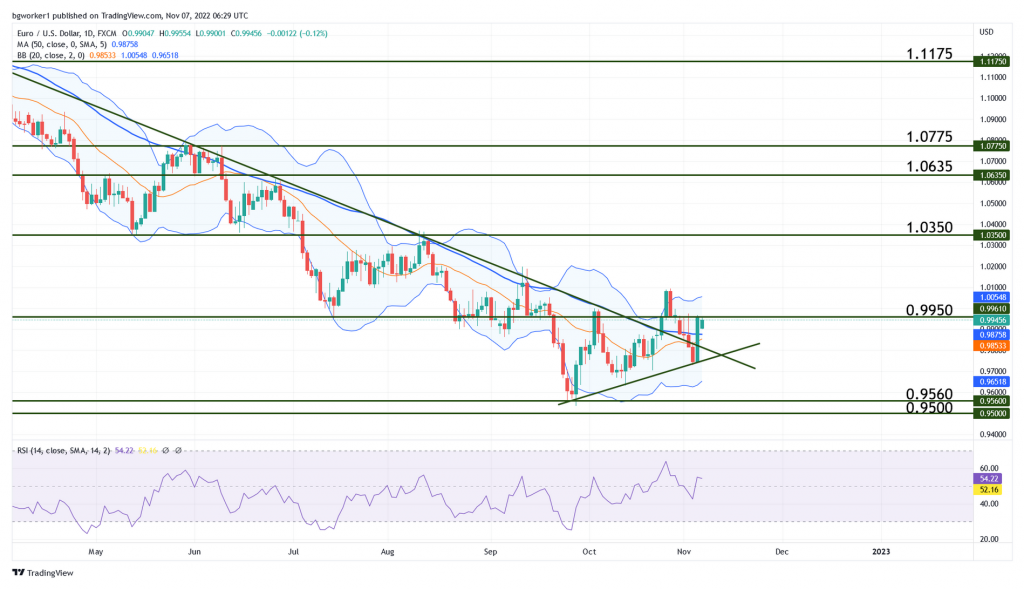US Dollar Slows After Mixed Jobs Data. CPI Ahead.
EUR/USD Below Parity Again but Bottoming Signs Are in Place
Last week the Fed added another 75 bps to the interest rate and Chairman Powell suggested that the tight monetary policy will continue for some time. The Non-Farm Payrolls report showed mixed data: the economy added 261K new jobs but the unemployment rate rose from 3.6% to 3.7%.
The greenback strengthened at the time of the rate announcement and during the presser but Friday it retreated, allowing the Euro to climb to 0.9960 from a weekly low at 0.9730. The projected “terminal” FOMC rate is now in the 5.00% – 5.25% range, higher than the 4.6% that was suggested by officials during their September meeting.
Key Data for the Week Ahead
Tuesday the U.S. Congressional Elections will take place and the US Dollar is likely to have some reaction but the exact behavior is hard to anticipate. Keep in mind that the outcome will likely be known before the official count is over (due to exit polls and early vote counts).
The main event of the week takes place Thursday at 1:30 pm GMT: the release of the U.S. Consumer Price Index – the Fed’s main gauge of inflation. The Monthly CPI is expected to increase to 0.6% from the previous 0.4%, while the yearly figure is expected to drop from the previous 8.2% to 8.0%. The Core CPI (monthly) is expected to drop to 0.5% from the previous 0.6%. This mixed prediction is likely to create more volatility, considering that the CPI is always a strong market mover.
The last event of the week is scheduled for Friday at 3:00 pm GMT: the Preliminary U.S. Consumer Sentiment. This survey acts as a leading indicator of consumer spending, which represents the majority of an economy’s entire activity.
Technical Outlook – EUR/USD
After the low at 0.9535, created on September 28, the pair printed two higher lows and is now supported by a bullish trend line. These successive higher lows are an early sign that a bottom might be in place and that we will see more upside action.
The first barrier in front of rising prices is the level at 0.9950, which acted as both support and resistance in the recent period. At the end of last month, the pair breached the level but the bulls weren’t able to keep the price above it. However, a second attempt to break 0.9950 might prove successful, in which case we may see a move toward the previous high at 1.0080. However, the pair is in a long-term downtrend so we shouldn’t dismiss another drop.
A lot will depend on the inflation data that comes out Thursday. It can amplify the moves that occur earlier in the week or it can reverse them completely, given that inflation is the main driver of interest rate decisions.
